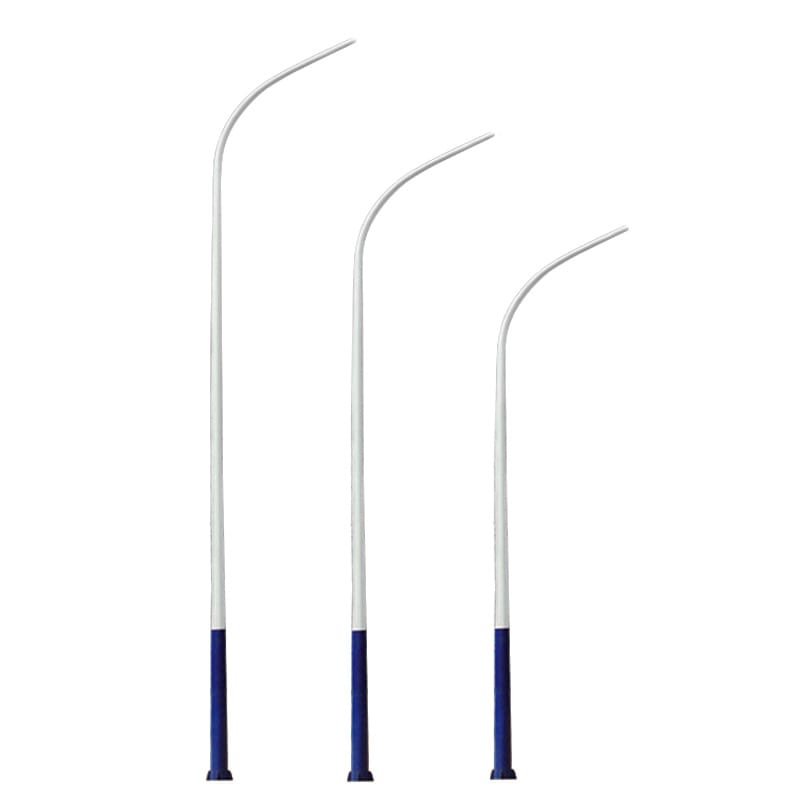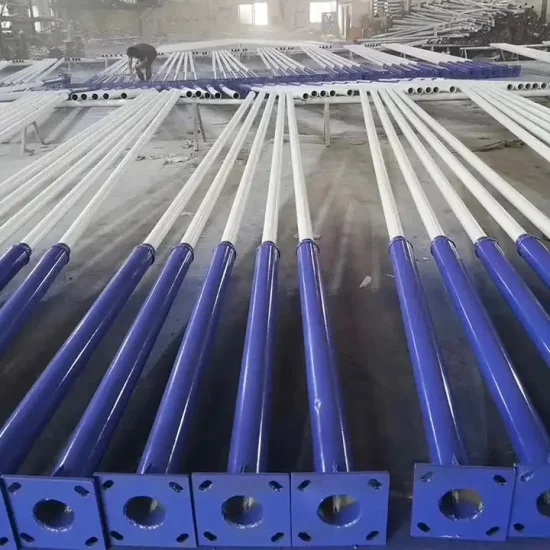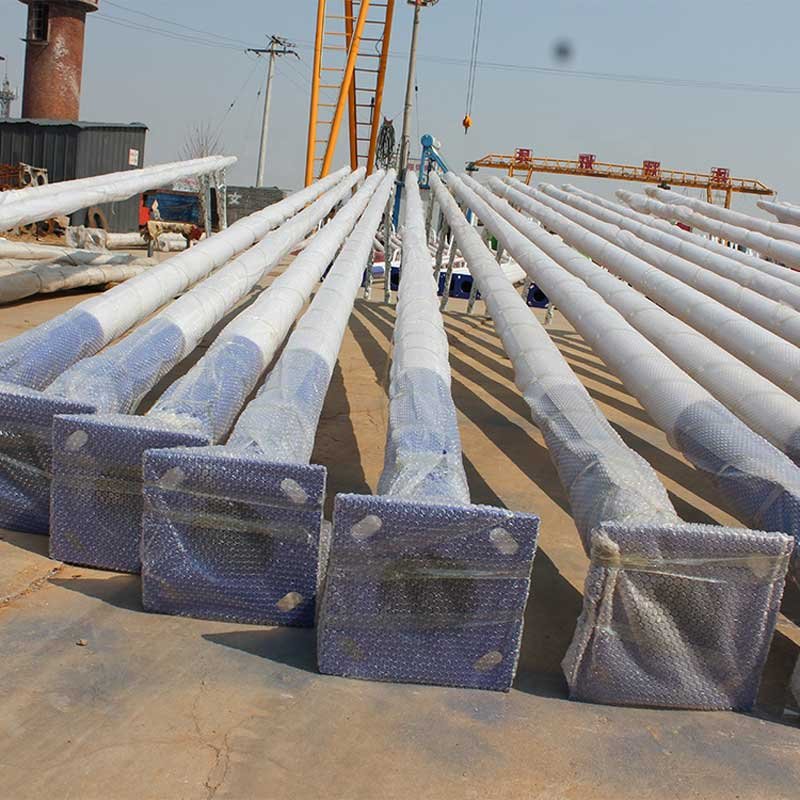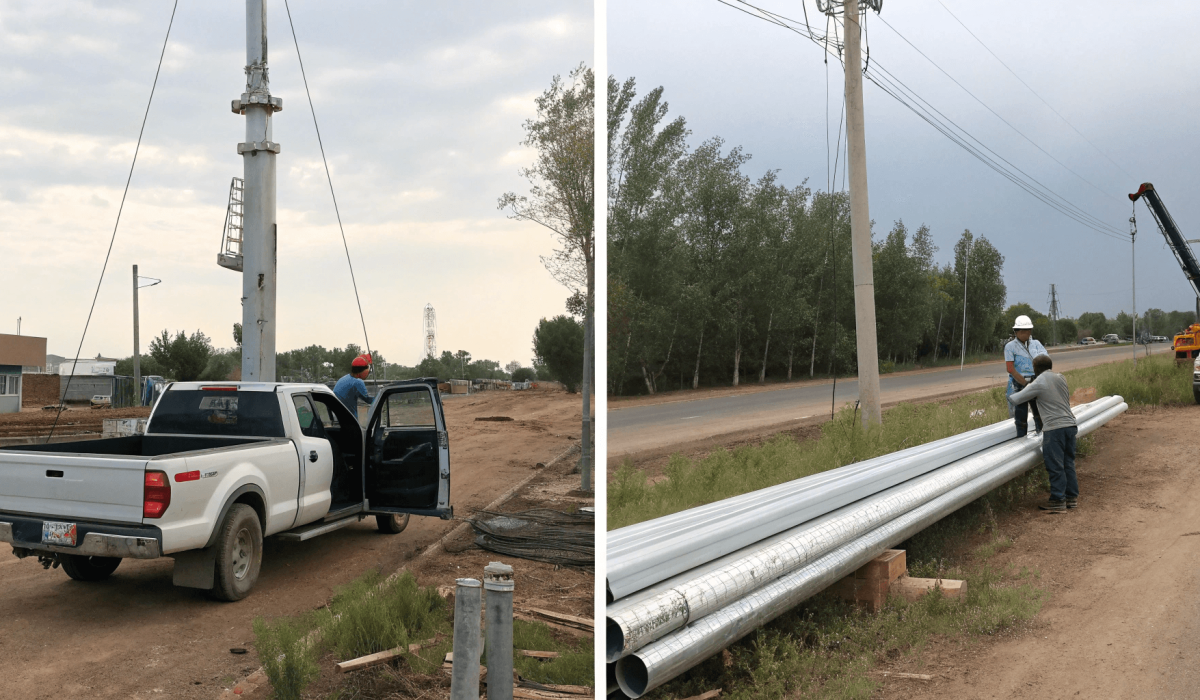I’m Nathi Moyo, a municipal infrastructure consultant based in South Africa. Since 2008, I’ve been involved in over 40 urban lighting projects across southern and eastern Africa—from wind-swept coastal roads in Mombasa to high-traffic inner-city highways in Johannesburg.
Over the years, one question keeps surfacing in tenders and technical evaluations:
“Should we go with steel poles or aluminum ones?”
It sounds simple. But when you're working with tight municipal budgets, harsh environments, and 20-year asset lifecycles—material choice becomes mission critical.
In this guide, I’ll walk you through how I evaluate steel, aluminum, and fiberglass poles based on real field performance—not just spec sheets.
What Really Determines the Best Street Light Pole Material?
The best material isn’t always the cheapest or strongest—it’s the one that survives your environment, budget, and maintenance capacity.

Here’s what we typically assess before choosing:
- Site application: Is it a highway, coastal promenade, parking lot, or pedestrian zone?
- Environmental exposure: Corrosive sea air? Acidic soil? High wind zones?
- Mounting method: Direct burial or anchor base?
- Available budget vs. lifecycle cost
- Maintenance crew capacity: Can they handle repainting or corrosion checks?
- Visual requirements: Are aesthetics important?
Why does this matter?
In one rural Eastern Cape project, using uncoated steel poles resulted in widespread corrosion within just 4 years. The budget “savings” turned into emergency replacement costs.
Steel Light Poles: Affordable, Strong—but Rust Never Sleeps
I used to default to galvanized steel. It’s cheap, tough, and available just about everywhere. But I’ve seen the trade-offs firsthand.
Properties of Steel Light Poles
- High load-bearing strength
- Cost-effective for mass deployment
- Can be hot-dip galvanized or powder-coated for corrosion resistance
Field Case:
On a 2015 project in Lusaka’s industrial belt, we used 9-meter galvanized steel poles. They’ve held up well under heavy truck traffic, but required repainting by year 7.
Pros of Steel Poles
- Common choice in urban and industrial zones
- Flexible for dual-arm or solar panel configurations
- Compatible with heavy-duty brackets and fixtures
Cons of Steel Poles
- Heavy, meaning more complex logistics
- Susceptible to rust, especially in humid or coastal settings
- Higher long-term maintenance (repainting, rust inspection)
Aluminum Light Poles: The Long Game Winner in Coastal Zones
I'll admit, I hesitated to use aluminum early on—mostly due to the price. But after managing several coastal projects, I’ve seen its payoff.

Properties of Aluminum Light Poles
- Naturally corrosion-resistant
- Lightweight and easy to transport
- Sleek, clean finish—often used in city beautification projects
Field Case:
In the 2016 Mombasa Port upgrade, we installed anodized aluminum poles. Eight years later, zero major maintenance—and still no surface pitting despite salt-laden air.
Pros of Aluminum Poles
- Excellent for corrosive environments
- Lifespan often exceeds 50 years
- Minimal ongoing maintenance
Cons of Aluminum Poles
- Higher upfront cost (typically 1.5–2x steel)
- Not ideal for vibration-sensitive areas like bridges
Fiberglass Light Poles: Specialist Use with Unique Advantages
Fiberglass isn’t common in many African projects, but it has its place—especially in safety-critical or vibration-heavy locations.
Properties of Fiberglass Poles
- Non-conductive, excellent near power lines
- Highly corrosion-resistant
- Lightweight, good for hard-to-access zones
Field Case:
On the N2 freeway overpass outside Durban, we switched to fiberglass after repeated steel pole fatigue failures. Five years later, no visible cracks or rust issues.
Pros of Fiberglass Poles
- Great for electrical safety requirements
- Resistant to harmonic vibration
- Moldable into different aesthetic forms
Cons of Fiberglass Poles
- Higher unit cost than steel
- Shorter lifespan (20–30 years depending on UV exposure)
- Limited local availability in some markets
Comparison Summary: Which Pole Material Suits Your Project?

| Feature | Steel | Aluminum | Fiberglass |
|---|---|---|---|
| Lifespan | 15–30 years | 50+ years | 20–30 years |
| Corrosion Resistance | Moderate (coated) | Excellent | Excellent |
| Weight | Heavy | Light | Light |
| Upfront Cost | $ (lowest) | $$ (moderate) | $$$ (highest) |
| Maintenance Need | High | Low | Low |
| Vibration Resistance | Low | Moderate | High |
| Electrical Conductivity | Conductive | Conductive | Non-conductive |
Quick Tip:
If your crew can’t commit to regular inspections and painting, skip steel in coastal zones.
What About the Parts You Don’t See? Component Materials Matter Too
Even with the best pole material, failure often comes from ignored accessories.
- Anchor bolts and base plates: Always use galvanized steel, regardless of pole type
- Top caps: Prefer aluminum or ABS plastic—especially on fiberglass poles
- Brackets and arms: Match material to avoid galvanic corrosion (e.g., don’t mount aluminum brackets on raw steel)
Check compatibility specs before mixing materials. I’ve seen $50k in pole damage from poor bracket choices alone.
Maintenance Breakdown: What You’re Signing Up For
Steel Poles
- Needs periodic rust inspection
- Repainting or re-galvanizing every 5–7 years
- Bolt tension must be checked in high-temp zones
Aluminum Poles
- Minimal—maybe surface cleaning
- Optional powder coating can reduce wear
Fiberglass Poles
- Generally maintenance-free
- UV protective coatings may be reapplied every 10+ years
Choosing by Scenario: Which Pole Type Wins?
| Installation Scenario | Best Material Choice |
|---|---|
| Salt-heavy coastal areas | Aluminum or Fiberglass |
| Bridges or Overpasses | Fiberglass (vibration resistant) |
| Urban roads | Steel (budget) or Aluminum |
| Electrical risk zones | Fiberglass (non-conductive) |
| Temporary rural lighting | Steel (easy availability) |
Final Thoughts: My Honest Advice After 15 Years

I used to think choosing light poles was just a budget game. It’s not.
Each environment writes its own rulebook. In Mombasa, aluminum wins. In central Johannesburg? Steel still rules. On elevated bridges—don’t even consider anything but fiberglass.
So, which one should you pick?
Think beyond procurement price. Consider lifespan, crew capacity, and site conditions. And don’t forget the mounting and bracket materials—they’re just as important.
Bonus Resources
- Download our “Lighting Material Specification Sheet (PDF)” used in Ghana City Projects
- Explore Our Complete Outdoor Lighting Design Guide
FAQs
Is aluminum really worth the higher price?
In most coastal areas, yes. The maintenance savings over 20+ years typically outweigh the upfront cost.
Are steel poles good for highways?
Absolutely. For inland locations, steel offers the best cost-performance ratio when maintained properly.
How long do fiberglass poles last?
20 to 30 years, depending on exposure and quality of UV protection.
Need tailored advice for your region or tender?
Let’s talk—contact our team for a full material recommendation based on your project type, site conditions, and budget.


